2D Palette
As mentioned in last week’s blog post, we tried another design of the 2D palette with a more round/circle-ish look. In addition, we integrated all the features and functions from the toolbox build into the 2D palette. We eventually decided to have three faces on the controller for different menus – including Tool Menu, House building Menu and Furniture navigation Menu.
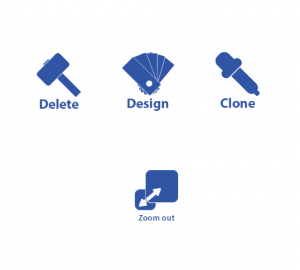
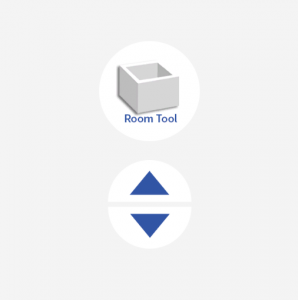
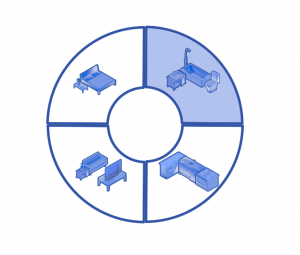
We found that the circle-ish 2D palette works well for people. Because we are using the Tiltbrush-like way for interaction which is using the pointer to point on a 2D controller palette menu, experienced VR players can very fast jump into the experience and starting building.
Besides, as we know that visual indicators are extremely important, we added feedback from the menu. It is like the button feedback on websites. We also thought it would be very important to have levels on menu. Eventually, we came up with the structure of how should all elements layout and in each room category how should we allow players to navigate more objects.

First, we used 2D image (screenshots) to indicate all the different furniture. Although it worked fine, people don’t like the flatness. We decided to use flat 2D image because they are consistent with the UI design, however, what we learnt is people would like more realistic and touchable objects in VR space. As a result, our 3rd level menu looks like this – a background image with a floating object on it.


After integrating the 2D palette into the scene and playtested with some ETC students, we found having the laser pointer on in the bird’s eye view is very distracting. Therefore, we changed the color of pointers for menu interaction and in-room furniture interaction. In this way, it worked much better.
Another important advantage of the 2D palette is that it is easy to access even in the in-room mode. Because it is always with the controller, people are quite comfortable with this click-select interaction. However, we took a very long time to discuss how should players put objects on the lot. Because when players are at the room size, they cann ot put objects as they did in the bird’s eye view, which is a simple grab and drop action.
Finally, we decided to let players first select the object and the object will appear on the controller. Only if the laser pointer points to a unit on the lot which is visible to the players, then they can place the object.
Bubble Tray
Apart from the 2D palette, we also implemented another object navigation method which is the bubble tray.

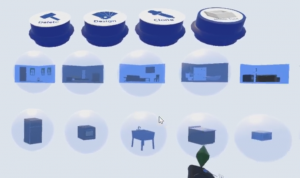
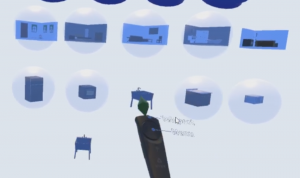
This is more like an iteration of the drawer system. However, people don’t need to reach out and open drawers physically, instead they can easily click on bubbles and when the bubble pops, they will see the next level of navigation. This interface also applies the menu level we mentioned in the 2D palette.
We found most players liked the 2D palette and Bubble tray because they are easy to access and do not require a lot of physical movement. Still, there are some players liked the drawer because the drawer makes them feel more agency and fun.
The week after next week will be our soft-opening. We will be fixing minor bugs of the three different interfaces and be prepared for the soft.